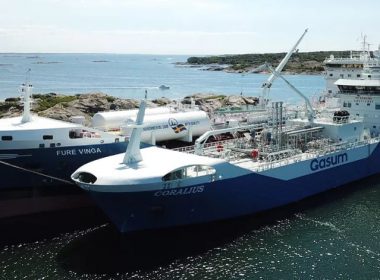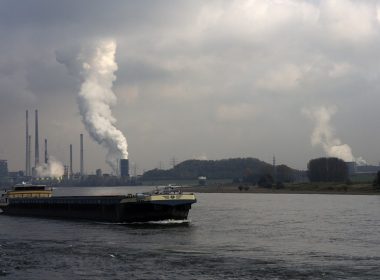COLUMN | Neverending troubles in the box [Grey Power]

There was a story the other day about clever Chinese car exporters who have designed a rig that will fit inside a 40-foot container that enables three cars to be transported in safety within the single box.
It might not be the novelty it claims. I remember inspecting a similar system in Scandinavia in the 1980s in which one car sat on the deck of the container, while the other two sat cocked up at an angle. It seemed quite ingenious at the time, although it seemed to be something of a poor relation to the purpose-built car carriers capable of transporting thousands of vehicles within a single hull. But if there was no requirement for thousands of cars, it seemed a logical development.
The reasons given today for this sudden resurgence of the container for the carriage of motor vehicles are the shortage of car carrier slots, an upsurge in the number of vehicles requiring long-haul transport, and the attractiveness in cost terms for car exporters. It all seems rather odd, except that money always talks and people are always on the lookout for cheaper alternatives. The huge slump in container freight rates after the ludicrous levels of the recent past remind one of other container gluts, when it seemed perfectly reasonable to carry scrap, timber, or waste paper in cheap, secure boxes. I remember that there was even a ship carrying containerised coal across the English Channel.
“Common sense suggests that despite a number of catastrophic fires that have destroyed car carriers and their cargoes in recent months, it is safer to carry vehicles in a ship designed specifically for that purpose.”
Carrying cars in containers has never been without its critics, however. There was some concern in law enforcement circles at the way in which organised crime was shipping high-value stolen vehicles in such a fashion, counting on the speed and convenience of getting the loot abroad to its receivers. Mostly, though, the concerns have revolved around safety, and fire risks in particular, with cars with a certain amount of fuel in their tanks in these enclosed spaces. Troubles with batteries, leaking fuel, and above all the difficulty of controlling temperature in these containers have all been publicised in the past with warnings about the need for proper inspections pre-shipment and the need for ventilation.
Common sense suggests that despite a number of catastrophic fires that have destroyed car carriers and their cargoes in recent months, it is safer to carry vehicles in a ship designed specifically for that purpose. In these ships, with their vast ventilation systems, the temperature and any build-up of vapours can be carefully controlled, while if the worst happens, there is a comprehensive detection and fire extinguishing system available. In containers, the contents merely cook in the tropics, which is the worst possible climate to which these vehicles’ batteries can be subjected.
Understandably, there have been fresh concerns expressed by insurers with the upsurge in electric vehicles being transported and the obvious difficulties of coping with the huge heat generated in the event of a fire, with thermal runaway being beyond the capabilities of a ship’s crew. Earlier this year, the US Coast Guard was warning about the special risks of second-hand and even damaged electric vehicles being shipped as they are, in some numbers, to developing nations from the US. Just last week, there was a report of a second-hand electric car afire in a Maersk container ship in the Mediterranean.
“The changing face of vehicle transport represents some new challenges.”
It might be anticipated that the current enthusiasm for cars in boxes will diminish, as car carrier capacity increases and the economics change once again. There is a large number of new big vehicle carriers building and on order in the East. Still, the insurers remain very concerned about fire risks aboard any ship carrying cars, and there have been suggestions that there need to be more and more thorough pre-shipment inspections, that batteries should be carefully disconnected, and that more training needs to be given to ships’ crews to enable them to more effectively intervene. It may be noted that there are several training companies already offering specialist fire safety courses.
Anticipating the move to more electric vehicles, there have even been suggestions that such vehicles should not be mixed with their conventionally fuelled counterparts but shipped aboard specially designed EV car carriers. That might seem a step too far, although it is becoming obvious that the changing face of vehicle transport represents some new challenges.







